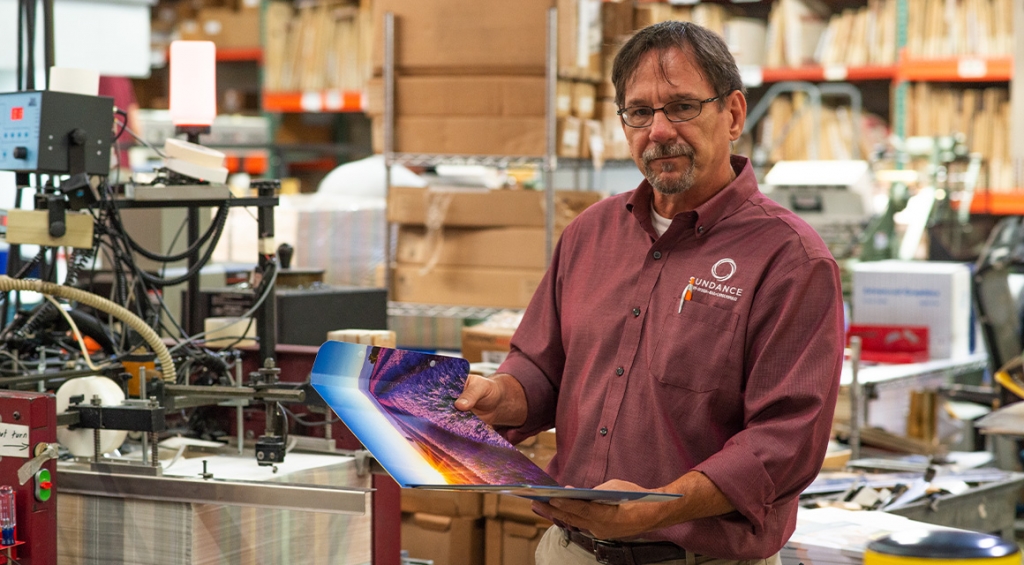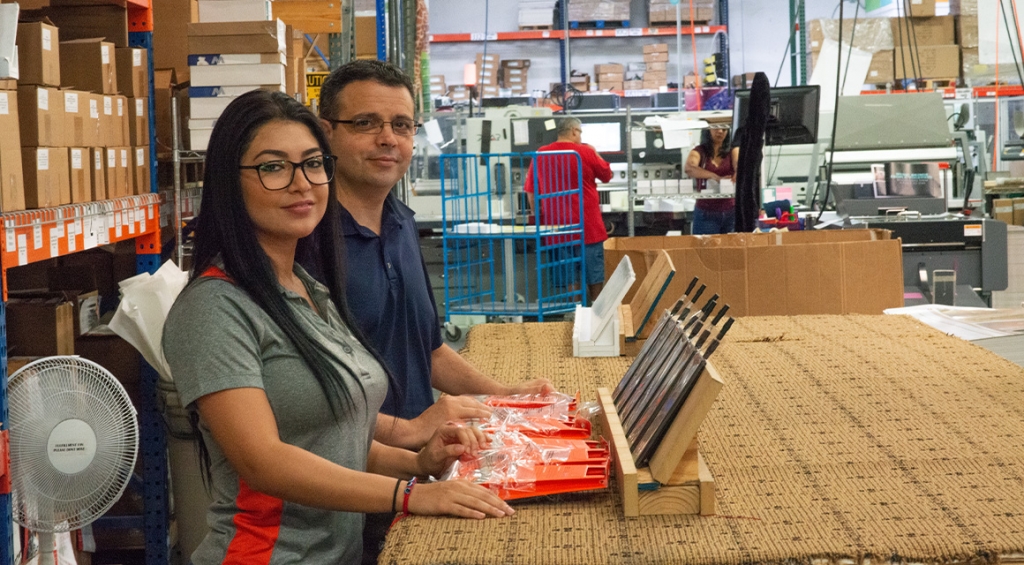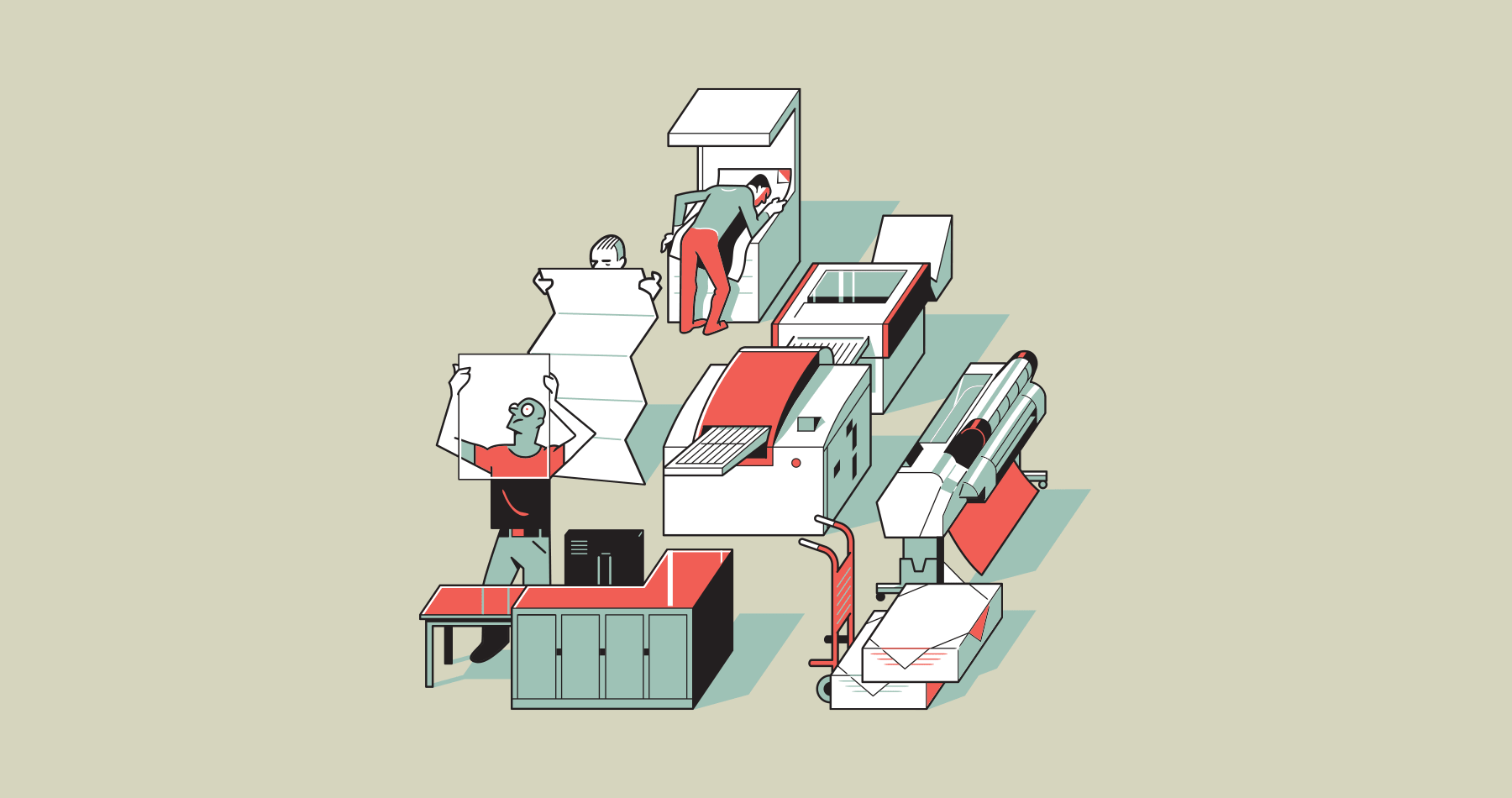SunDance succeeds … one barrier-busting solution at a time.
By JohnHenry Ruggieri
At SunDance, we’ve been achieving over 20-percent compound annual growth year over year since our inception in 2007. This isn’t easy, and people often ask me how we’re doing it. I can cite investment in equipment and technology, our marketing efforts, or our continual focus on efficiency — all of this clearly plays a part. But there’s one overriding factor I credit for our success: Our company-wide culture and philosophy towards meeting our customers’ needs. It all begins with one simple phrase: “Never start from ‘no’.”

I have to credit my father, John Ruggieri, for this mantra. Let me first take a step back to yet another generation. My grandfather started a pharmaceutical packaging company called Comar. My father and uncle took over the reins and grew it into the expanded, thriving business it is today (presently managed by my brother). Comar makes all kinds of plastic packaging solutions for the pharma industry (e.g., bottles, droppers, syringes). Imagine, a drug manufacturer comes to Comar and says, “We have this product, and here’s how we want to package it.” And this is where it begins — the collaboration, the search for a balance between the customer’s objectives and the manufacturing capabilities and constraints of injection and blow molding. My father strongly believed — and saw this theory manifest over and over again — that the key response to the initial question from a customer (“Can we do x?”) should never be “no.” It creates an immediate and irrevocable barrier. It limits creative thinking and potential solution-finding. “Yes,” even when followed by a qualified “but,” keeps the door open to opportunity and the possibility of a fruitful outcome.
My father was also a business broker, and he excelled at matchmaking between parties looking to buy or sell businesses. In 2006, in the process of assessing a company, he bought it because he believed it had promise: SunDance Graphics, in Orlando, Florida. He left business brokering behind, and I moved to Orlando from Africa, where I had been managing a cattle ranch, to embark on this new endeavor. SunDance Graphics was and still is a fine art publisher and art licensor that provides on-trend art to an international audience. We brought our root philosophy to the business, and without a doubt, it enabled us to be successful from the first year. This was a significant since year one was the start of the Great Recession.
When we purchased SunDance Graphics, it had a single in-house press used to produce fine art prints and posters. While there was work for the press, it was an underutilized asset, and our business plan hinged on leveraging it to its fullest capacity. We couldn’t afford to turn prospective customers away. From these beginning days, trying to fill press capacity and build business despite the economic downturn, we found ways to meet our customers’ needs even when prevailing wisdom would say we couldn’t.
I’ll give you an example. Being based in Orlando, one of the markets we wanted to serve with commercial printing is the theme parks, their restaurants, and other businesses units on property. One such restaurant came to us asking if we could print customized drink coasters, and our staff responded, “Sorry, we don’t do that.” My father and I jumped in and asked, “Why not?” Our sheetfed press wasn’t rated for the required board stock thickness of .89 mm, but reluctant to turn away a customer, we pressed forward. Working with our new team, we found a way to modify the grippers on the press to open wider to allow us to guide through a thicker board stock. With a little out-of-the-box thinking and some ingenuity, we came back with a solution, delivered the product as requested, and gained a customer. This solution also afforded us the opportunity to set the tone with our team and demonstrate that we wouldn’t turn our back on a challenge, even modifying a multimillion-dollar piece of equipment if that’s what it took to say “yes” to a client.
Another restaurant came to us wanting to print plastic menus. At the time, we had just the one short-delivery press with no UV or extended delivery capabilities. This didn’t stop us from saying “yes.” We asked ourselves, what do we need to do to run this job? The answer: We ran small loads, used Oxy Dry inks and changed them out frequently, put additives in the fountain solution, and ran extra fans to help with drying. It wasn’t the most elegant solution, but I’ll tell you what: It made us stand out. Very few sheetfed printers in our area were printing on plastic at the time. Our determination to find a way won us another loyal customer.
Fast forward about a year and a half, and our business plan progressed. We were seeing consistent, substantial growth with our commercial printing business and decided it was time to create a separate company, now known as SunDance. We brought on an additional partner with extensive print sales experience, purchased a new sheetfed press, and added to our production team. In more recent years, we’ve added numerous digital presses and finishing equipment.
SunDance is now a multi-channel print and marketing company that provides global solutions with an array of services — design, branding, digital and offset printing, finishing, direct marketing/mail services, fulfillment, and digital marketing — to a wide range of companies, many of which are in the healthcare, hospitality, higher education, theme park, non-profit, and manufacturing sectors.

Taking Risks
Through the years, we have evolved our originating philosophy from “Never start with ‘no’” to “Find a way to say ‘yes’.” When a unique opportunity presents itself, we look at every conceivable way of executing on it, and this above all sets us apart from our competition. The key to it is getting our entire staff on board, all operating with the same mindset and approach. To do this, we give our employees permission and room to explore solutions and take risks.
For instance, we were producing a set of marketing materials for a healthcare client, and one piece of the job was going to require $18,000 of hand taping — a significant expense. Our department manager and machine operator took the initiative to question this and investigate alternatives. They discovered that if a guide was removed from our folder gluer, the product could be run through the machine, using glue instead of tape, enabling us to produce the pieces much faster and with far less expense. Our crew was empowered to look at the machine specs and say, “Well, why is 30 inches the limit? What are the options, downsides, and benefits of removing these guides along the side?” This is exactly how we want our staff to think.
Often our employees’ ideas are big-picture and align with our core values as a company. Like when our press team advocated for recycling the solvent waste from our offset press and then researched the necessary equipment for turning the waste into distilled, recyclable water and solvent. We implemented their suggestion and have now reduced four drums of waste per month to two or three per year. They identified an opportunity and presented a well-researched, effective, environmentally friendly, cost-saving solution. This example aligns perfectly with our values as a Sustainable Green Printer and supports the environmental stewardship our customers have come to expect from our brand.
Making Commitments
When a customer asks us for something that requires equipment or a capability we simply don’t have, it’s not an automatic show-stopper. There might still be a way to get to “yes,” even if it involves making an investment — whether short (low risk) or long term (potentially higher risk).
We had an opportunity with a hospitality customer to make an investment to win their business. The initial project, which the customer wanted to award to a single vendor, consisted of a myriad of print components, including a card holder with a very intricate cut pattern. Our team quickly determined that this delicate pattern couldn’t be diecut with a standard steel rule die. It would require laser cutting capability, which we didn’t have. This was back when laser die cutters were not common pieces of equipment for a commercial printer. And while we could have outsourced this one piece, we would have risked not meeting the customer’s deadline or their budget. We looked at the project, and asked ourselves, how can we get to “yes” here? With just a customer handshake and a commitment to produce the product with us at least once more, we bought a laser cutter. Now, as I said, laser die cutters were not common — nor could we have justified the expense if they were. Instead we bought a laser cutter for engraving from a local manufacturer. We brought the equipment in quickly, hand-fed the pieces, and got it done in time — meeting the client’s expectations and keeping a large, lucrative project.

That was a short-term win that didn’t require or justify a long-term investment. But sometimes our customers’ needs do drive us to more committing endeavors. Like when we created a mailing department … in just a few weeks.
This was a situation wherein one of our major healthcare customers had a dire need. They were having problems with their mail house and came to us asking if we could handle their mail. We had been considering getting into mailing, and this was a perfect opportunity for us to commit. We said yes and went to work. We bought a mail machine and an inkjet tabber and hired a full-time mail professional. We quite literally had things up and running within weeks, meeting our customers’ distribution deadline and establishing an offering we would continue to grow and develop. We now have a mailing division, have added more equipment, and provide mailing services for many of our clients. It’s not a huge portion of our overall revenue stream, but I can say unequivocally that it has allowed us to secure additional top-tier customers we would not have otherwise.
Collaborating For the Win
I would venture to say our most fulfilling over-the-top, out-of-the-box projects are the ones that require creative collaboration with our customers. The most standout project of this kind was an edible cookbook. Yes, you read that right — an edible cookbook. An agency came to us, having found us through our SEO efforts, asking if we could print a book using edible material. You’ve probably seen eco-friendly paper embedded with seeds. You plant the paper and, as it dissolves, the seeds remain. This was the same concept. Wet the paper, and seasonings remain. The publisher wanted readers to be able to tear pages out and use them in the recipes. Although we are versed in printing FDA-approved products, those never actually involved food products. This request did and would present many challenges.
Rather than saying, “Sorry, we can’t do that,” we asked the customer to tell us exactly what was required to do the job. First and foremost, we would have to create a “clean room” where we could digitally print and assemble the books. It would need positive air pressure and air filters, and we’d have to make sure anybody who walked in wore a bodysuit, hairnet, gloves, and shoe covers. Accomplishing this is no easy task, as it required an airlock entrance to the room. Rather than being deterred, we jumped in. We converted one of our conference rooms, took out some of the furniture, put plastic over the doors, covered up the carpet, and made all the necessary changes (none structural). We didn’t have the qualified staff to maintain the necessary QC certification, so we used the customer’s QC staff for the project. Using remote cameras, we had a 24-hour live stream video to audit the process to make sure it complied with the necessary quality standards.

In the end, we met the customers’ aggressive deadline and produced the product they needed. For us, it was a very profitable project, and it pushed us out of our comfort zone. It was fun and inspiring and rallied our team to innovate a solution.
More recently, we’ve collaborated with a customer to solve a data-oriented challenge. This is one of our larger clients, and they needed us to manage the dissemination of legal documents that can change frequently. Add to this another level of complexity: The data varies based on certain geographical factors among its recipients. Re-printing jobs to keep up with these data updates and versioning was not a fiscally smart solution.
The client came to us looking for a digital solution. Instead of fighting the idea, we embraced it. We designed a process utilizing electronic tablets to distribute data updates. We assigned one of our programmers to code the project, establish tracking protocols, and build a client-friendly interface. This is an important customer we couldn’t afford to lose. When they came to us and asked, “Can you do this?,” we figured out how.
When we approach projects this way, open-minded and willing to take risks, we create intimate customer relationships — ones in which there’s a sense of loyalty, an implicit trust, and a reliance on each other. These relationships last and persist over time. And they create opportunities for innovation. There’s a willingness and a drive, on both sides, to get past constraints and find ways to achieve the goals at hand. To find creative ways to say “yes.”
No, we don’t win every customer. We can’t find a way to “yes” on every conceivable project. But our approach of customer-driven innovation is helping us continue our record of growth. Since 2007, we’ve expanded from 15,000 square feet of facility space to 43,000, and now we’re looking to add a second facility. Our compound annual growth rate is steady. We’re profitable. We have a very committed team, driven by the challenge to solve our customers’ problems. And most importantly, we have customers whose challenges are being solved. That is our ultimate goal
JohnHenry Ruggieri is president of SunDance, a company focused on creating innovative custom solutions in both business and consumer markets, for clients large and small. Connect via ruggieri@leadingprint.org.
Other recent articles

The Vanishing

Weighing In

We’re OK

The Guide

By The Numbers

